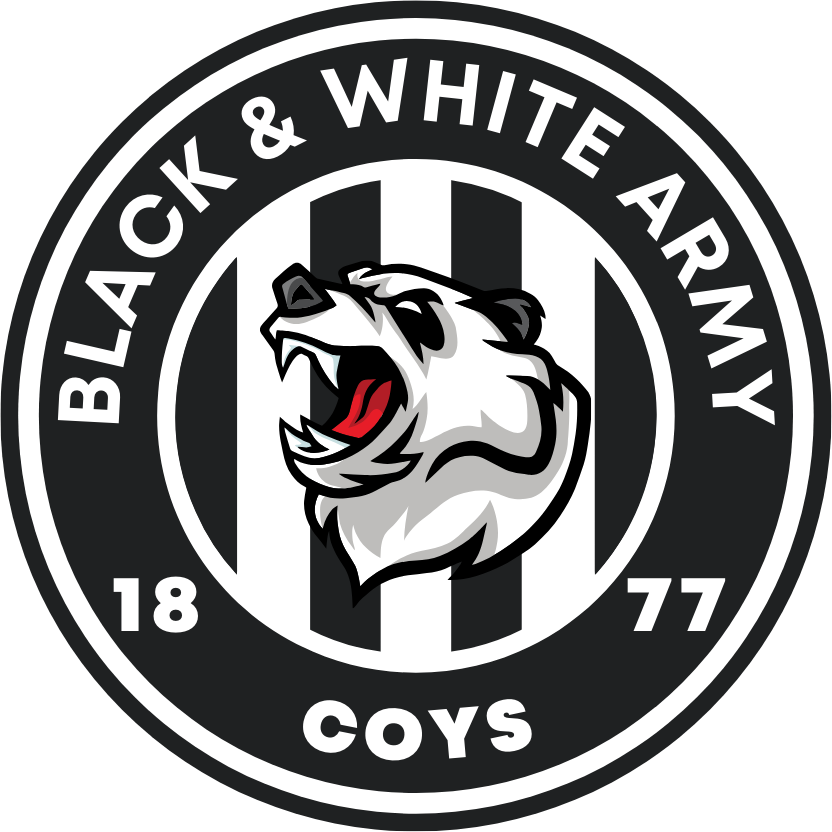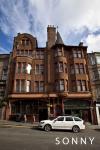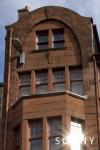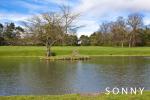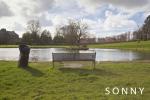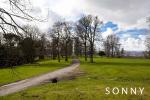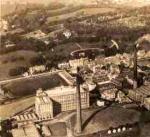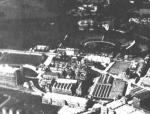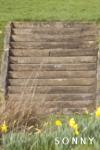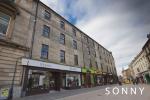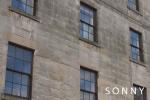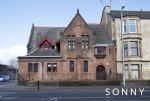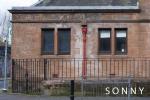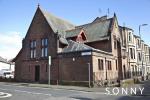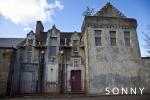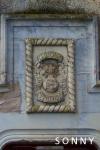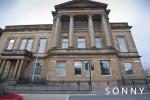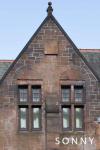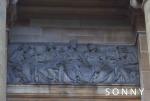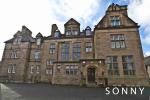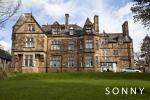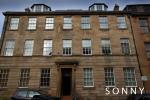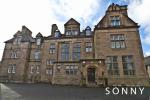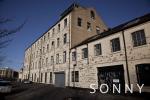-
Posts
5,178 -
Joined
-
Last visited
-
Days Won
50
Content Type
Profiles
Forums
Events
Store
Everything posted by Sonny
-

Two Days Left. Time To Decide, Or To Roll The Dice
Sonny replied to div's topic in 10000Hours Archive
I'm in. No takeover is ever going to be perfect but what is important is that those that do takeover have the Club's interests at heart and 10,000 HRs has that. There are very, very few takeovers from rich business men that have succeeded. They either die or get bored. The fans' takeover is the way to go. The structure and rules can be modified down the line but the most important thing is the control by the people who matter - the fans. Sign up NOW. -

Paisley - My Pics Of Old Or Unusual Buildings Or Places Of Interest.
Sonny replied to Sonny's topic in General Nonsense
I have been doing a little research and I would say several pubs are older than the Bull. The Bull has been in existence since 1901 and yes there was a pub of that name on the site previously but the building was demolished and another one erected with a different design. The only continuity is a name. In Irvine the Ship Inn has been the same building with the pub being open continuously since 1754 - thats what I call an old pub with no doubts about its authenticity. I have read a couple of reports about the Wee Barrel being the oldest/second oldest but cant find a date when it was built or opened. I'll ask the next time I am in (when the season starts again). The Old Swan has been in continuous existence as a pub since 1883 so for me that is the oldest that I am aware of for now. I am sure someone else may correct me on that. -

Paisley - My Pics Of Old Or Unusual Buildings Or Places Of Interest.
Sonny replied to Sonny's topic in General Nonsense
Hi Insaintee. I dont think I stated it was the oldest pub. The Bull has been open continuously since 1901. It is often referred to as the oldest pub but I reckon the Hayweighs is older being built in 1900 but of course that is shut down just now. I dont know how old the Abercorn is. Anyone any ideas or know any other pub that is older? -

Paisley - My Pics Of Old Or Unusual Buildings Or Places Of Interest.
Sonny replied to Sonny's topic in General Nonsense
I am sure many of you would recognise PICTURE 82 from a horizontal position. It is the A Listed building at 7 New St which also happens to have the Bull Inn on the ground floor. Designed by WD McLennan (who also designed Paisley Tech and many other Paisley buildings) it is in Art Noveau style. Built in 1901. There had been another pub on the site before that. -
Get the ice cream and jelly in! There's going to be a party soon.
-
Me too.
-

Paisley - My Pics Of Old Or Unusual Buildings Or Places Of Interest.
Sonny replied to Sonny's topic in General Nonsense
Been away stocking up on jelly and ice cream the last few days. Now ready for the party. Picture 82 CLUE is as follows and shame on many who dont recognise it! -

Paisley - My Pics Of Old Or Unusual Buildings Or Places Of Interest.
Sonny replied to Sonny's topic in General Nonsense
I dont know for certain but would guess the stones are either from the Glen-Coats House after its demolition or long beforehand from the old Ferguslie Castle which dated back to around 1544. -
I would not be happy with Carey at fullback. Doesnt track back enough or tackle. An accident waiting to happen. In an emergency he could do a job but he would be a weak link if used there all season (IMHO). Would love to see us sign Jure again with Carey in front of him.
-

Paisley - My Pics Of Old Or Unusual Buildings Or Places Of Interest.
Sonny replied to Sonny's topic in General Nonsense
PICTURE 81 shows the steps in Ferguslie Park leading down to the pond (1st image). Two further images of the park in images 2 & 3. It is only in the last few years that I have come to realise just what an amazing place Ferguslie was and its impact an Paisley. Ferguslie has origins dating back to the 16th century, and was the site of a large estate associated with the monks based at Paisley. The modern town, however, was born in the 1850s around an iron-stone mining settlement known as Inkerman. At its closure, the town was demolished and its residents moved to Ferguslie or nearby Elderslie. Image 4 - Ferguslie House Ferguslie House was best known as the home of Mr Thomas Coats of the well-known firm of J and P Coats, thread manufacturers in Paisley. It was built in 1828 by Hippolyte J Blanc with additions by Abercrombie of Paisley, converted into a hospital in 1916 and demolished in 1920. In 1845, it was recorded that the remains of a castle were also on the site, the land having been granted in 1544 by the Abbot of Paisley to a man called John Hamilton. The house was situated across the main road from the giant Ferguslie Mills complex. Image 5 - Aerial photo of Ferguslie House and Mills The aerial photo shows how close it was to the mills. It is the white building in the top middle above the pond that is still there now. Image 6 - Ferguslie Pond This postcard shows the ornamental pond in the gardens of Ferguslie House as it was in the very early years of the twentieth century. A bridge connects the island to the banks and these have been extensively Iandscaped with trees and flower beds. Image 7 - Glencoats House The house was completed in 1890 in Ferguslie Park on the other side of the railway line from Ferguslie House, again close to the family business, Ferguslie Mills. It is said to have been built on the site of the old Ferguslie Castle. The architect Hippolyte J Blanc's design was exhibited in 1887, the stables were built to his design in 1888 as was the lodge in 1891. There were at least two extensions to the house including one phase in 1908. It was gifted to the Royal Alexandra Infirmary as an auxilliary hospital in 1934, closed in 1972 and demolished in 1980. Image 8 - Aerial view of Glencoats House and Ferguslie Mill. This 1930 photo shows the mills, the pond in Ferguslie gardens, Ferguslie House and Glencoats. Glen-Coats Son of the late Mr. Thomas Coats, of Ferguslie and Maxwelltown, and Margaret, daughter of Mr. Thomas Glen, Thornhill, Renfrewshire, SirThomas Glen-Coats was born at Ferguslie House, Paisley in 184, and was educated at Queenwood College, Hampshire. He was a director of the great thread-making firm of J. & P. Coats, Ltd. He also had a long and honourable service as an officer of volunteers, being an Honorary Colonel and formerly Commandant of the 2nd V.B. Argyll and Sutherland Highlanders. He assumed the additional surname of Glen in 1894, and received the honour of a baronetcy in the same year. A Liberal in politics, he was a member of various Liberal clubs and organisations in Glasgow, Edinburgh, and London. He was elected M.P. for West Renfrewshire in 1906 and on the death of Lord Blythswood was appointed Lord Lieutenant of Renfrewshire in August, 1908. He had two sons and one daughter. Lady Glen Coats was a very well respected political campaigner in her own right. His son Thomas Glen-Coats was an illustrious designer who worked for A Mylne & Co as a naval architect and produced some wonderful race winning yachts. His most famous victory was winning Gold for Great Britain in the 1908 Olympics. Contested in his home waters of the Clyde, sailing onboard ‘Hera’, Glen-Coats pushed the Alfred Mylne designed yacht ‘Mouchette’ into Silver medal position. On his father's death in 1922 he became a baronet. The baronetcy became extinct on his death as he had no children. BBC - The Yacht Hera: Paisley's Olympic Champion 1908 The Coats name became famous worldwide. This is one of the stranger episodes. Coats Land, a one-hundred-and-fifty mile stretch of the coast of the Antarctic continent discovered by the Scottish National Antarctic Expedition of 1902-1904, was named after the Paisley thread-manufacturing family, to which the main financial backers of the Expedition belonged. Major Andrew Coats and his younger brother James Coats junior between them provided over £30,000 of the £36,405 raised to finance the Expedition, while another brother, Sir Thomas Glen Coats, contributed generously to the costs of publishing some of the scientific results. Image 9 The mansion house and part of the pleasure grounds of Ferguslie Park, Paisley, have been presented to the Royal Alexandra Infirmary, Paisley, as a memorial to the late Sir Thomas and Lady Glen-Coats and Major A. Harold Glen-Coats, together with a sum of money to form an endowment fund which will make a substantial contribution towards the cost of maintenance and running expenses. The donors are Sir Thomas Glen-Coats, Mrs.E. H. T. Parsons, and Harold Glen-Coats. One bizarre postcript to the gift of the hospital to the people of Paisley was the legend of the ghost of Lady Glen Coats. It was said that she could be heard playing the piano in the upper part of the building, when not standing over sleeping patients. The story was reported in the Paisley Daily Express so it must be true ! So the park I once played in as a child was originally part of the magnificent gardens of two Paisley mansions of very eminent Buddies. -

Paisley - My Pics Of Old Or Unusual Buildings Or Places Of Interest.
Sonny replied to Sonny's topic in General Nonsense
Maybe Ped. I dont know. Maybe Buddiecat can tell us as he worked on the buildings? -

Paisley - My Pics Of Old Or Unusual Buildings Or Places Of Interest.
Sonny replied to Sonny's topic in General Nonsense
No you dont Sid. You are made of sterner stuff than that -

Paisley - My Pics Of Old Or Unusual Buildings Or Places Of Interest.
Sonny replied to Sonny's topic in General Nonsense
PICTURE 80 is 1-5 Moss Street. A row of tenements built nearly 200 years ago in 1822. Category B Listed. (Second image). (Note that my old house in Glenburn was demolished after only 40 years. Back in 1822 they knew how to build houses that last!) Today's PICTURE 81 CLUE is ...... -

Paisley - My Pics Of Old Or Unusual Buildings Or Places Of Interest.
Sonny replied to Sonny's topic in General Nonsense
Hi guys. Although not posting every day I did mean to post earlier than this but good weather then trying to catch up with my work because of it means I have only now got round to posting another wee image to keep you all ticking over. PICTURE 80 (a, not much of a) CLUE is ,,,,, And thanks for the info on the Barracks in Whitehaugh. All new info for me. -
Div, I cannot make the meeting. Could you ask RA what his views are on a Newco? Thanks.
-

Paisley - My Pics Of Old Or Unusual Buildings Or Places Of Interest.
Sonny replied to Sonny's topic in General Nonsense
I thought you would have got that Sid as you seem to have an interest in Glasgow Rd (but not as far as Ralston). PICTURE 78 is the Arthur Allison Memorial Hall built by Robert Allison in memory of his brother Arthur. The Hall was the Church Hall of Greenlaw Church and built in 1893. The architect? - none other than the great TG himself (again!). C Listed (surely some mistake? All TG's buildings should be B listed at least.) Robert Allison was another of Paisley's many philanthropists and he almost single handedly put up the finance to build the tower at the Abbey and demolish the slums around it and landscape the area. He started off as a timber merchant in Love St and soon had a large business of shipping, timber and insurance. I have printed the full image of PICTURE 79 as I have absolutely no idea as to anything about this building in Whitehaugh Ave near the Allison Hall. I have magnified the inscription to see if it helps anyone provide some more info on it. Images 4 and 5 here. -

Paisley - My Pics Of Old Or Unusual Buildings Or Places Of Interest.
Sonny replied to Sonny's topic in General Nonsense
Would you prefer no clues and just the image? Cast your vote guys.... Famous Elvis Costello song Thanks guys. Was beginning to feel I was just posting to myself. I am so aware the silly season has started with some downright rubbish being posted and I too will read very little except the Rumours Forum over the next couple of months. I'll post a shot every few days or even weekly to keep things going until some greater normality and interest returns with the fitba. -

Paisley - My Pics Of Old Or Unusual Buildings Or Places Of Interest.
Sonny replied to Sonny's topic in General Nonsense
Interest in this thread seems to have waned recently. After I post PICTURE 80 I am going to suspend it until probably the new season starts. Enjoy the sunshine folks -

Paisley - My Pics Of Old Or Unusual Buildings Or Places Of Interest.
Sonny replied to Sonny's topic in General Nonsense
Sorry guys. Been on Sunny Millport over the weekend. No sign of wee Chico hiding there. I thought a lot of you would recognise the building from the inside and am impressed that you took enough time on the way in to have a good look at the building as you wouldnt see it on the way out through the back way to the black vans. It is indeed Paisley Sheriff Court. A Listed. Built 1885 with Clarke & Bell being the Architects. I look forward to reading your memories of this place. PICTURE 78 CLUE is the second image. -

Paisley - My Pics Of Old Or Unusual Buildings Or Places Of Interest.
Sonny replied to Sonny's topic in General Nonsense
PICTURE 77 is 10-12 George ST. B Listed and built in 1840. Unsure about its original use (warehouse related to the cotton / weaving industry?) but it is now flats. Check http://www.mcewanfra...k/property-1565 if you fancy buying one. Decided to go back to a CLUE again for the next one. PICTURE 78 CLUE is ........ -

Paisley - My Pics Of Old Or Unusual Buildings Or Places Of Interest.
Sonny replied to Sonny's topic in General Nonsense
PICTURE 76 is Moredun House off Moredun Road. Built in 1890 as a Nunnery for the Franciscan Sisters for Africa. Architect William Lieper. The Sisters left the Nunnery in 1944 and the House became a Nursing Home then private residences in the mid 90s. B Listed. Obviously the Clues were too hard for you guys so here is the full image for PICTURE 77........(3rd image) -

Paisley - My Pics Of Old Or Unusual Buildings Or Places Of Interest.
Sonny replied to Sonny's topic in General Nonsense
....take me to a Nunnery ....... -

Paisley - My Pics Of Old Or Unusual Buildings Or Places Of Interest.
Sonny replied to Sonny's topic in General Nonsense
No-one has identified PICTURE 76 from the CLUE so here is the full image. PS. I am extremely busy at the moment so please forgive me if I dont get to post an image every day. -

Paisley - My Pics Of Old Or Unusual Buildings Or Places Of Interest.
Sonny replied to Sonny's topic in General Nonsense
My memory isn't as good as it used to be so I cannot be sure but I think I was given stitches several times in that building when I was growing up. It may have been the main building but I think it was the Lodge. Always thought it was a cracking wee building and passed it every day for years coming down from Glenburn into the town. -

Paisley - My Pics Of Old Or Unusual Buildings Or Places Of Interest.
Sonny replied to Sonny's topic in General Nonsense
Thanks Buddiecat. PICTURE 75 is Blackhall House in Blackhall Lane. Built in 1848 by D Spiers & Son as a Silk Throwing Mill. Independent of Coats and Clark. C Listed. Has had various uses over the years after silk industry moved back to the East.
